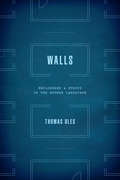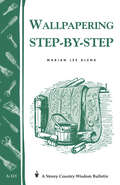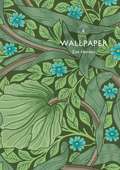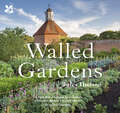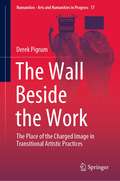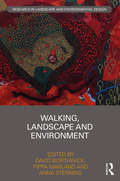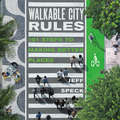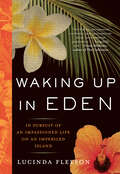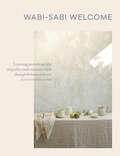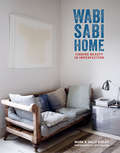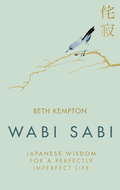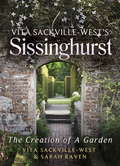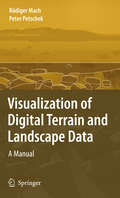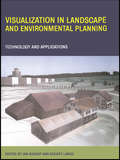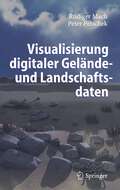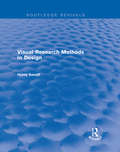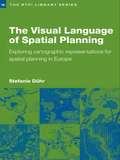- Table View
- List View
Walls: Enclosure and Ethics in the Modern Landscape
by Thomas OlesStone walls, concrete walls, chain-link walls, border walls: we live in a world of walls. Walls mark sacred space and embody earthly power. They maintain peace and cause war. They enforce separation and create unity. They express identity and build community. Yard to nation, city to self, walls define and dissect our lives. And, for Thomas Oles, it is time to broaden our ideas of what they can—and must—do. In Walls, Oles shows how our minds and our politics are shaped by–and shape–our divisions in the landscape. He traces the rich array of practices and meanings connected to the making and marking of boundaries across history and prehistory, and he describes how these practices have declined in recent centuries. The consequence, he argues, is all around us in the contemporary landscape, riven by walls shoddy in material and mean in spirit. Yet even today, Oles demonstrates, every wall remains potentially an opening, a stage, that critical place in the landscape where people present themselves and define their obligations to one another. In an evocative epilogue, Oles brings to life a society of productive, intentional, and ethical enclosure—one that will leave readers more hopeful about the divided landscapes of the future.
Walls: Enclosure and Ethics in the Modern Landscape
by Thomas OlesStone walls, concrete walls, chain-link walls, border walls: we live in a world of walls. Walls mark sacred space and embody earthly power. They maintain peace and cause war. They enforce separation and create unity. They express identity and build community. Yard to nation, city to self, walls define and dissect our lives. And, for Thomas Oles, it is time to broaden our ideas of what they can—and must—do. In Walls, Oles shows how our minds and our politics are shaped by–and shape–our divisions in the landscape. He traces the rich array of practices and meanings connected to the making and marking of boundaries across history and prehistory, and he describes how these practices have declined in recent centuries. The consequence, he argues, is all around us in the contemporary landscape, riven by walls shoddy in material and mean in spirit. Yet even today, Oles demonstrates, every wall remains potentially an opening, a stage, that critical place in the landscape where people present themselves and define their obligations to one another. In an evocative epilogue, Oles brings to life a society of productive, intentional, and ethical enclosure—one that will leave readers more hopeful about the divided landscapes of the future.
Walls: Enclosure and Ethics in the Modern Landscape
by Thomas OlesStone walls, concrete walls, chain-link walls, border walls: we live in a world of walls. Walls mark sacred space and embody earthly power. They maintain peace and cause war. They enforce separation and create unity. They express identity and build community. Yard to nation, city to self, walls define and dissect our lives. And, for Thomas Oles, it is time to broaden our ideas of what they can—and must—do. In Walls, Oles shows how our minds and our politics are shaped by–and shape–our divisions in the landscape. He traces the rich array of practices and meanings connected to the making and marking of boundaries across history and prehistory, and he describes how these practices have declined in recent centuries. The consequence, he argues, is all around us in the contemporary landscape, riven by walls shoddy in material and mean in spirit. Yet even today, Oles demonstrates, every wall remains potentially an opening, a stage, that critical place in the landscape where people present themselves and define their obligations to one another. In an evocative epilogue, Oles brings to life a society of productive, intentional, and ethical enclosure—one that will leave readers more hopeful about the divided landscapes of the future.
Walls: Enclosure and Ethics in the Modern Landscape
by Thomas OlesStone walls, concrete walls, chain-link walls, border walls: we live in a world of walls. Walls mark sacred space and embody earthly power. They maintain peace and cause war. They enforce separation and create unity. They express identity and build community. Yard to nation, city to self, walls define and dissect our lives. And, for Thomas Oles, it is time to broaden our ideas of what they can—and must—do. In Walls, Oles shows how our minds and our politics are shaped by–and shape–our divisions in the landscape. He traces the rich array of practices and meanings connected to the making and marking of boundaries across history and prehistory, and he describes how these practices have declined in recent centuries. The consequence, he argues, is all around us in the contemporary landscape, riven by walls shoddy in material and mean in spirit. Yet even today, Oles demonstrates, every wall remains potentially an opening, a stage, that critical place in the landscape where people present themselves and define their obligations to one another. In an evocative epilogue, Oles brings to life a society of productive, intentional, and ethical enclosure—one that will leave readers more hopeful about the divided landscapes of the future.
Wallpapering Step-by-Step: Storey's Country Wisdom Bulletin A-113 (Storey Country Wisdom Bulletin)
by Marian Lee KlenkSince 1973, Storey's Country Wisdom Bulletins have offered practical, hands-on instructions designed to help readers master dozens of country living skills quickly and easily. There are now more than 170 titles in this series, and their remarkable popularity reflects the common desire of country and city dwellers alike to cultivate personal independence in everyday life.
Wallpaper (Shire Library)
by Zoë HendonWe agonise and argue when choosing it; we admire, compliment and criticise it (or keep politely quiet about it); and the rest of the time we don't even notice it. Wallpaper has been the backdrop to our homes for hundreds of years. It can make a house feel cosy or trendy, modern or traditional, and it is one of the key elements of home décor through which to express personal taste. Despite the threat from plain-painted minimalism, wallpaper maintains a strong presence in modern domestic decoration. Zoë Hendon traces the history of wallpaper in Britain and its foremost designers, examining how social mobility and new technologies have influenced design trends. From early Chinoiserie, through William Morris and on to the 'feature wall', this book looks at wallpaper's surprisingly controversial place in shaping our sense of home.
Wallpaper (Shire Library)
by Zoë HendonWe agonise and argue when choosing it; we admire, compliment and criticise it (or keep politely quiet about it); and the rest of the time we don't even notice it. Wallpaper has been the backdrop to our homes for hundreds of years. It can make a house feel cosy or trendy, modern or traditional, and it is one of the key elements of home décor through which to express personal taste. Despite the threat from plain-painted minimalism, wallpaper maintains a strong presence in modern domestic decoration. Zoë Hendon traces the history of wallpaper in Britain and its foremost designers, examining how social mobility and new technologies have influenced design trends. From early Chinoiserie, through William Morris and on to the 'feature wall', this book looks at wallpaper's surprisingly controversial place in shaping our sense of home.
Walled Gardens
by Jules Hudson National Trust BooksBBC presenter Jules Hudson (Countryfile, Escape to the Country) is passionate about walled gardens. In this book, he looks at walled gardens throughout England and Wales and explores their history, innovative design and cultural heritage.
The Wall Beside the Work: The Place of the Charged Image in Transitional Artistic Practices (Numanities - Arts and Humanities in Progress #17)
by Derek PigrumThis book is about the way artists generate an endless chain of substitute objects for something they can never quite find. It explores the work involved in art with a focus upon finding, gathering, and assembling charged and auratic objects on the wall beside the work. The author employs the term Das Gegenwerk or the work towards the work. This concept avoids definitive closure and expands the notion of drafting and related practices to include qualitative research methods. The multi-mode transitional practices of Das Gegenwerk are devoid of any demand for a preconceived goal but instead hinge upon the provisional and indeterminate. As such, it is a far cry from the binary logic of the computer and the design cycle but is of interest to an audience engaged with both. Das Gegenwerk hinges on our capacity to respond to the outside rather than the inwardness often attributed to creative agency. A fundamental belief of the book is that by investigating and adapting the practices of expert practitioners, we can gain an understanding of high-level creativity. It is neither a recipe nor a linear or cyclic approach. Rather, artistic creation is an interweave of transitional multi-mode practices where the overriding emphasis is on the handling or habituation of transitional materials in physical place. The author addresses the urgent need to provide a balance between the promise of new technology and our capacity to both respond to and work with what the world bestows.
Walking, Landscape and Environment (Routledge Research in Landscape and Environmental Design)
by David Borthwick Pippa Marland Anna StenningWalking, Landscape and Environment explores walking as a method of research and practice in the humanities and creative arts, emerging from a recent surge of growth in urban and rural walking. This edited collection of essays from leading figures in the field presents an enquiry into, and a critique of, the methods and results of cutting-edge ‘walking research’. Walking negotiates the intersections between the human self, place and space, offering a cross-disciplinary collaborative method of research which can be utilised in areas such as ecocriticism, landscape architecture, literature, cultural geography and the visual arts. Bringing together a multitude of perspectives from different disciplines, on topics including health and wellbeing, disability studies, social justice, ecology and gender, this book provides a unique appraisal of the humanist perspective on landscape. In doing so, it challenges Romantic approaches to walking, applying new ideas in contemporary critical thought and alternative perspectives on embodiment and trans-corporeality.
Walking, Landscape and Environment (Routledge Research in Landscape and Environmental Design)
by David Borthwick Pippa Marland Anna StenningWalking, Landscape and Environment explores walking as a method of research and practice in the humanities and creative arts, emerging from a recent surge of growth in urban and rural walking. This edited collection of essays from leading figures in the field presents an enquiry into, and a critique of, the methods and results of cutting-edge ‘walking research’. Walking negotiates the intersections between the human self, place and space, offering a cross-disciplinary collaborative method of research which can be utilised in areas such as ecocriticism, landscape architecture, literature, cultural geography and the visual arts. Bringing together a multitude of perspectives from different disciplines, on topics including health and wellbeing, disability studies, social justice, ecology and gender, this book provides a unique appraisal of the humanist perspective on landscape. In doing so, it challenges Romantic approaches to walking, applying new ideas in contemporary critical thought and alternative perspectives on embodiment and trans-corporeality.
Walkable City Rules: 101 Steps to Making Better Places
by Jeff Speck“Cities are the future of the human race, and Jeff Speck knows how to make them work.” —David Owen, staff writer at the New Yorker Nearly every US city would like to be more walkable—for reasons of health, wealth, and the environment—yet few are taking the proper steps to get there. The goals are often clear, but the path is seldom easy. Jeff Speck’s follow-up to his bestselling Walkable City is the resource that cities and citizens need to usher in an era of renewed street life. Walkable City Rules is a doer’s guide to making change in cities, and making it now. The 101 rules are practical yet engaging—worded for arguments at the planning commission, illustrated for clarity, and packed with specifications as well as data. For ease of use, the rules are grouped into 19 chapters that cover everything from selling walkability, to getting the parking right, escaping automobilism, making comfortable spaces and interesting places, and doing it now! Walkable City was written to inspire; Walkable City Rules was written to enable. It is the most comprehensive tool available for bringing the latest and most effective city-planning practices to bear in your community. The content and presentation make it a force multiplier for place-makers and change-makers everywhere.
Waking Up in Eden: In Pursuit of an Impassioned Life on an Imperiled Island
by Lucinda FleesonLike so many of us, Lucinda Fleeson wanted to escape what had become a routine life. So, she quit her big-city job, sold her suburban house, and moved halfway across the world to the island of Kauai to work at the National Tropical Botanical Garden. Imagine a one-hundred-acre garden estate nestled amid ocean cliffs, rain forests, and secluded coves. Exotic and beautiful, yes, but as Fleeson awakens to this sensual world, exploring the island's food, beaches, and history, she encounters an endangered paradise—the Hawaii we don't see in the tourist brochures. Native plants are dying at an astonishing rate—Hawaii is called the Extinction Capital of the World—and invasive species (plants, animals, and humans) have imperiled this Garden of Eden. Fleeson accompanies a plant hunter into the rain forest to find the last of a dying species, descends into limestone caves with a paleontologist who deconstructs island history through fossil life, and shadows a botanical pioneer who propagates rare seeds, hoping to reclaim the landscape. Her grown-up adventure is a reminder of the value of choosing passion over security, individuality over convention, and the pressing need to protect the earth. And as she witnesses the island's plant renewal efforts, she sees her own life blossom again.
Wabi-Sabi Welcome: Learning to Embrace the Imperfect and Entertain with Thoughtfulness and Ease
by Julie Pointer AdamsWabi-Sabi Welcome is sharing a pot of tea with friends. It is preparing delicious food to nourish, not to show off. It&’s keeping a basket of cozy slippers at the door for guests. It is well-worn linens, bouquets of branches picked on a walk in the woods, mismatched mugs, and collected dishware that only improves with time.Filled with unexpected ideas and recipes, tips for creating an intimate environment, and visits to select homes around the world where the principle of wabi-sabi is woven into daily life, Wabi-Sabi Welcome is a new way to entertain-one that&’s easygoing, unfussy, and stress-free and that meaningfully reflects the spirit of both host and guest.
Wabi-Sabi Home: Finding Beauty In Imperfection
by Mark Bailey Sally BaileyWabi-Sabi Home is a look that’s rough around the edges and sees the beauty in imperfection but is at the same time creative, modern and brave.
Wabi Sabi: Japanese Wisdom for a Perfectly Imperfect Life
by Beth Kempton'A truly transformative read' Sunday Times STYLE'More than ever, we need books like this' Jessica Seaton, Co-Founder of Toast and author of Gather, Cook, FeastA whole new way of looking at the world - and your life - inspired by centuries-old Japanese wisdom.Wabi sabi ("wah-bi sah-bi") is a captivating concept from Japanese aesthetics, which helps us to see beauty in imperfection, appreciate simplicity and accept the transient nature of all things. With roots in zen and the way of tea, the timeless wisdom of wabi sabi is more relevant than ever for modern life, as we search for new ways to approach life's challenges and seek meaning beyond materialism.Wabi sabi is a refreshing antidote to our fast-paced, consumption-driven world, which will encourage you to slow down, reconnect with nature, and be gentler on yourself. It will help you simplify everything, and concentrate on what really matters.From honouring the rhythm of the seasons to creating a welcoming home, from reframing failure to ageing with grace, wabi sabi will teach you to find more joy and inspiration throughout your perfectly imperfect life.This book is the definitive guide to applying the principles of wabi sabi to transform every area of your life, and finding happiness right where you are.
Vita Sackville-West's Sissinghurst: The Creation of a Garden
by Vita Sackville-West Sarah RavenFrom 1946 to 1957, Vita Sackville-West, the poet, bestselling author of All Passion Spent and maker of Sissinghurst, wrote a weekly column in the Observer describing her life at Sissinghurst, showing her to be one of the most visionary horticulturalists of the twentieth-century.With wonderful additions by Sarah Raven, Vita Sackville-West's Sissinghurst draws on this extraordinary archive, revealing Vita's most loved flowers, as well as offering practical advice for gardeners. Often funny and completely accessibly written with colour and originality, it also describes details of the trials and tribulations of crafting a place of beauty and elegance.Sissinghurst has gone on to become one of the most visited and inspirational gardens in the world and this marvellous book, illustrated with drawings and original photographs throughout, shows us how it was created and how gardeners everywhere can use some of the ideas from both Sarah Raven and Vita Sackville-West.
Visualization of Digital Terrain and Landscape Data: A Manual
by Rüdiger Mach Peter PetschekThis book approaches the realisation of digital terrain and landscape data through clear and practical examples. From data provision and the creation of revealing analyses to realistic depictions for presentation purposes, the reader is led through the world of digital 3-D graphics. The authors’ deep knowledge of the scientific fundamentals and many years of experience in 3-D visualization enable them to lead the reader through a complex subject and shed light on previously murky virtual landscapes.
Visualization in Landscape and Environmental Planning: Technology and Applications
by Ian D. Bishop Eckart LangeThis major reference presents the challenges, issues and directions of computer-based visualization of the natural and built environment and the role of such visualization in landscape and environmental planning. It offers a uniquely systematic approach to the potential of visualization and the writers are acknowledged experts in their field of specialization. Case studies are presented to illustrate many aspects of landscape management including forestry, agriculture, ecology, mining and urban development.
Visualization in Landscape and Environmental Planning: Technology and Applications
by Ian Bishop Eckart LangeThis major reference presents the challenges, issues and directions of computer-based visualization of the natural and built environment and the role of such visualization in landscape and environmental planning. It offers a uniquely systematic approach to the potential of visualization and the writers are acknowledged experts in their field of specialization. Case studies are presented to illustrate many aspects of landscape management including forestry, agriculture, ecology, mining and urban development.
Visualisierung digitaler Gelände- und Landschaftsdaten
by Rüdiger Mach Peter PetschekOft wirken erste Gehversuche mit 3D-Visualisierung zu technisch. Stimmung und Atmosphäre werden nicht kommuniziert. Das ist frustrierend und führt dazu, dass gerne zu alt bekannten Kollagetechniken für eine Präsentation gegriffen wird. Die technologischen Entwicklungen im Umfeld der Computergrafik bieten jedoch Möglichkeiten, die mit klassischen Methoden nie erreicht werden. Dies ist einer der Schwerpunkte dieses Buches. Vor dem Hintergrund der Anforderungen des Planungswesens und den Ansprüchen realer Planungsdaten vermitteln die Autoren den Umgang mit digitaler Technik zur Erstellung ansprechender Visualisierungen rund um digitale Landschaften. Alles was Sie als Architekt, Bauingeniur, Planer und Landschaftsarchitekt schon immer zum Thema Visualisierung Digitaler Gelände- und Landschaftsdaten wissen wollten, finden Sie in diesem Buch. Es handelt sich um ein Buch von Praktikern für Praktiker.
Visual Research Methods in Design (Routledge Revivals)
by Henry SanoffFirst published in 1991, this book is about applications and issues relating to the visual environment. The content pertains to the understanding of human behaviour in the environment by recording behaviour and actions or by direct interaction with people. The author examines research and planning methods that primarily stress the visual features of the physical environment. Traditionally, environmental research has relied on verbal descriptions and perceptions of the physical environment, virtually ignoring the visual component and the potential application of the social sciences for gathering this data. Various strategies that can expand the visual information base have been explored here: diagramming, photo-interviewing, photo-sorting, mapping, notation, simulation, videotaping, and CADD.
Visual Research Methods in Design (Routledge Revivals)
by Henry SanoffFirst published in 1991, this book is about applications and issues relating to the visual environment. The content pertains to the understanding of human behaviour in the environment by recording behaviour and actions or by direct interaction with people. The author examines research and planning methods that primarily stress the visual features of the physical environment. Traditionally, environmental research has relied on verbal descriptions and perceptions of the physical environment, virtually ignoring the visual component and the potential application of the social sciences for gathering this data. Various strategies that can expand the visual information base have been explored here: diagramming, photo-interviewing, photo-sorting, mapping, notation, simulation, videotaping, and CADD.
The Visual Language of Spatial Planning: Exploring Cartographic Representations for Spatial Planning in Europe (RTPI Library Series)
by Stefanie DührAt a time when strategic spatial planning is undergoing a renaissance in Europe, The Visual Language of Spatial Planning makes a unique contribution to this rapidly growing area of teaching and research. Discussing the relevant theoretical perspectives on policy-making and planning, combined with cartographic communication and the use of cartographic representations in the planning process, Stephanie Duhr provides conceptual and practical tools to help students and practitioners better understand maps and visualizations in strategic spatial planning. The book is the first to review the form, style and use of cartographic representations in strategic spacial plans in the Netherlands, Germany and England as well as at European level. Significant differences between planning traditions and the impact of these on transnational planning processes are highlighted. It concludes by discussing the practical implications for future strategic spacial planning processes in Europe and the best use of cartographic representations to reach agreement and to focus dialogue.
The Visual Language of Spatial Planning: Exploring Cartographic Representations for Spatial Planning in Europe (RTPI Library Series)
by Stefanie DührAt a time when strategic spatial planning is undergoing a renaissance in Europe, The Visual Language of Spatial Planning makes a unique contribution to this rapidly growing area of teaching and research. Discussing the relevant theoretical perspectives on policy-making and planning, combined with cartographic communication and the use of cartographic representations in the planning process, Stephanie Duhr provides conceptual and practical tools to help students and practitioners better understand maps and visualizations in strategic spatial planning. The book is the first to review the form, style and use of cartographic representations in strategic spacial plans in the Netherlands, Germany and England as well as at European level. Significant differences between planning traditions and the impact of these on transnational planning processes are highlighted. It concludes by discussing the practical implications for future strategic spacial planning processes in Europe and the best use of cartographic representations to reach agreement and to focus dialogue.
